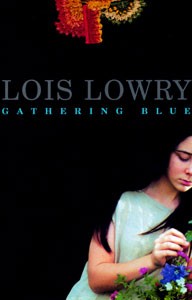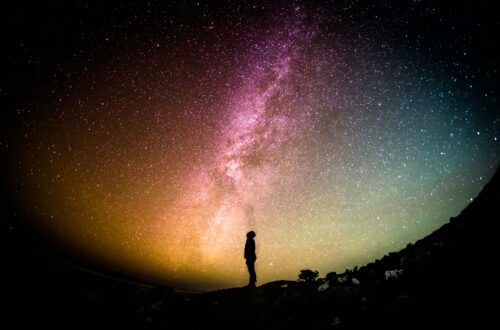Gathering Blue
 A few years ago I read Lois Lowry’s The Giver, a thought-provoking book that offers a sobering vision of the future. Pain and conflict are ended; the society depicted in the book is technologically advanced and socially engineered; freedom is obsolete and, for the most part, not missed.
A few years ago I read Lois Lowry’s The Giver, a thought-provoking book that offers a sobering vision of the future. Pain and conflict are ended; the society depicted in the book is technologically advanced and socially engineered; freedom is obsolete and, for the most part, not missed.
It’s the kind of book that leaves you with a lot to think about, and I didn’t feel like pressing on into the next book in the series. But lately it’s been on my mind, so I read the second book this week. Gathering Blue takes up the subject of the future again, but this time instead of an “advanced” society, Lowry creates a more primitive one — with at least the suggestion that it’s the remains of the world of the first book after some catastrophic ruin. The people live in huts and scrabble for food, striking their children and clawing for survival. Only one modern structure remains, inhabited by the Council of Guardians responsible for running the society.
There are lots of points of comparison between the two books, and lots of disturbing similarities to our extra-book world. I found it interesting that while in The Giver the past was remembered by only one designated “Receiver of Memory” because it was considered too disturbing, the past — or rather, a highly controlled version of the past — is paraded every year before the people in Gathering Blue in a ceremony heavy with ritual. Yet the basic purpose for this is the same in both books: subjugation. History is appropriated and reinterpreted by a political entity to maintain a state of equilibrium beneficial to the continuance of the status quo.
Child artists are targets in this book, not for destruction, but for enslavement to a government. One carves; another sings; the heroine, Kira, creates elaborate “threadings.” I liked the way Lowry managed to create a sense of unease for the reader long before the full truth was laid bare. I found it refreshing in this era of STEM giddiness to read a book underscoring the humanizing, liberating power of the arts and imaginative pursuits. (I realize I probably sound curmudgeonly, but as Sven Birkerts has said, “Being a curmudgeon is a tough job, but someone has to do it.”) As in The Giver, we find in these pages someone with courage to risk and imagine, so even though the future depicted here is a dystopia I came away feeling encouraged.
One thing I wondered about was the statement the book seemed to be making about religion in this vision of the future. It seems to be very much intertwined with the state, as the only notable religious observance is depicted at the community’s yearly Gathering at which they review their history. Everyone acknowledges with a nod, or perhaps a slight bow, a cross-like structure referred to as the “Worship object.” I wasn’t sure whether to read this as a comment on Christianity evolving into an empty show and part of the government’s general oppression of people, or a statement about the future of spirituality altogether. It’s not hard to imagine a religion being corrupted by state interference; that’s happened many times over. As G.K. Chesterton says, Christianity has died a natural death many times and experienced a fresh resurrection. But given the age-old, naturally religious nature of human beings, I’m skeptical about the implication that the spiritual could ever become completely irrelevant. If you’ve read it, I’m curious to know how you read this aspect of the story.
An interview with Lois Lowry is included at the back of this book. She explains,
Gathering Blue postulates a world of the future, as The Giver does. I simply created a different kind of world, one that had regressed instead of leaping forward technologically. It was fascinating to explore the savagery of such a world. I began to feel that maybe it coexisted with Jonas’ world…
The result is a book that raises many questions. What defines an advanced society? What defines a primitive one? How does history, and the knowledge of the past, help to shape the future? What is the relationship between a culture’s level of civilization and the way it treats its most vulnerable members? This series invites us to think about these questions, and to consider the important underlying one: What kind of society do we want, and how can we help to bring it about?



One Comment
hopeinbrazil
Thanks for your thoughtful (as always) commentary on this book. I’ve read Giver and Messenger, but haven’t tackled this one yet.